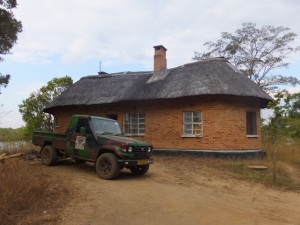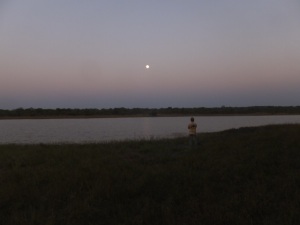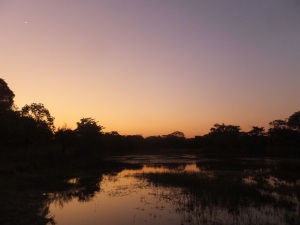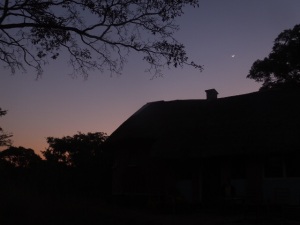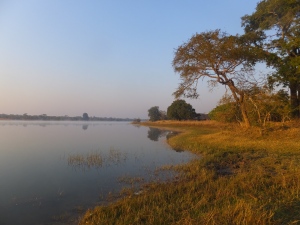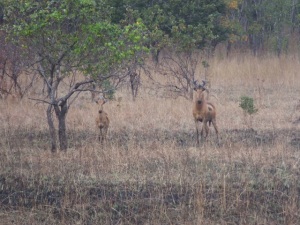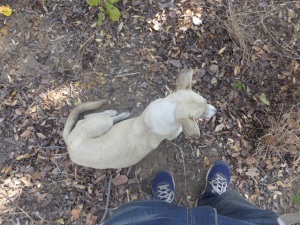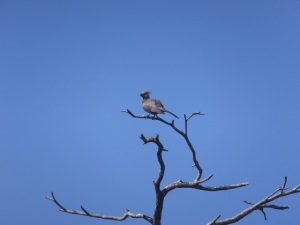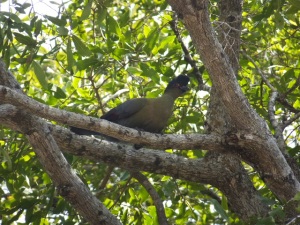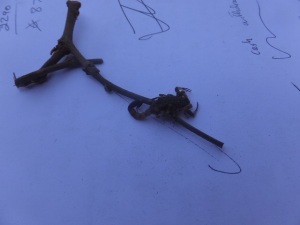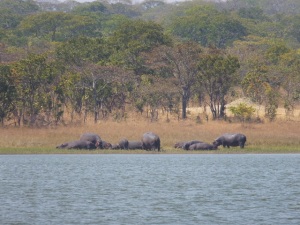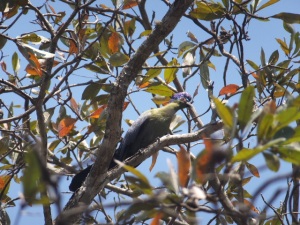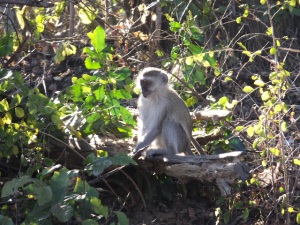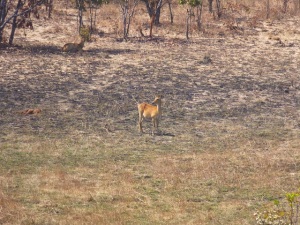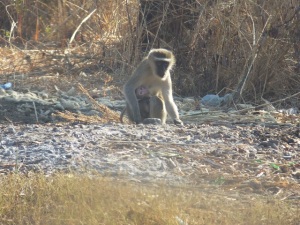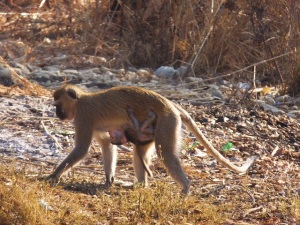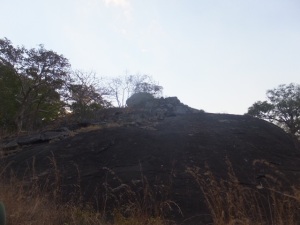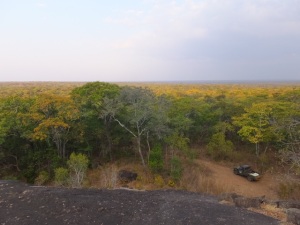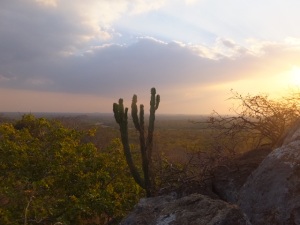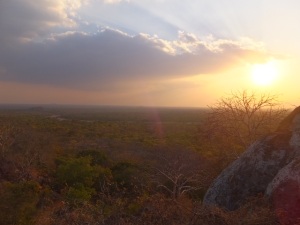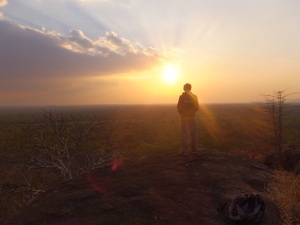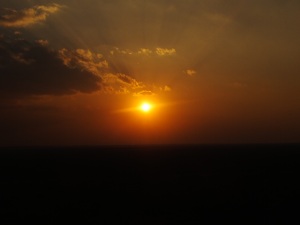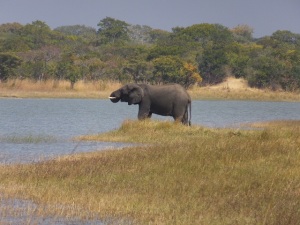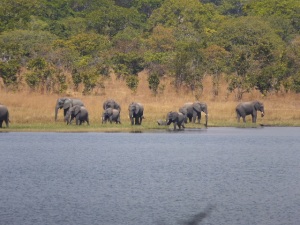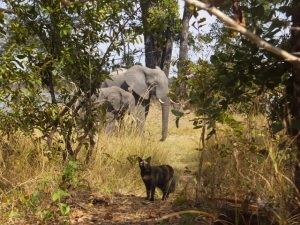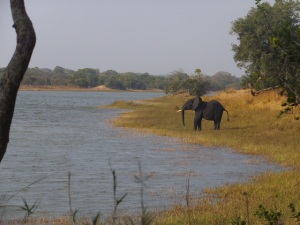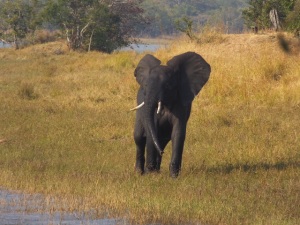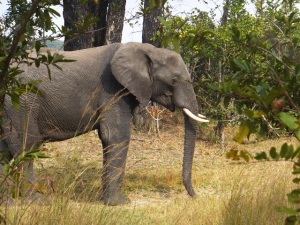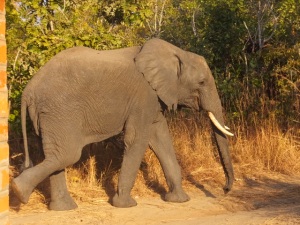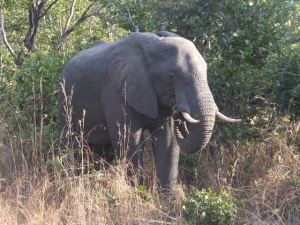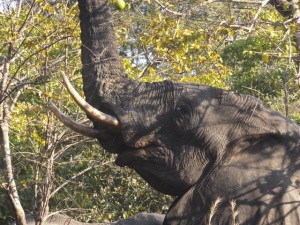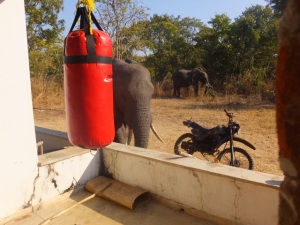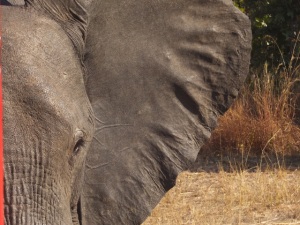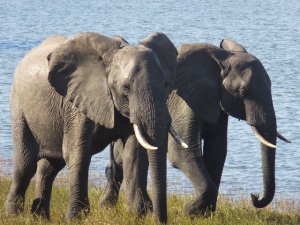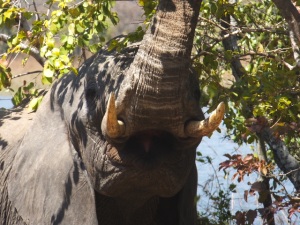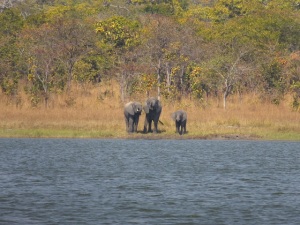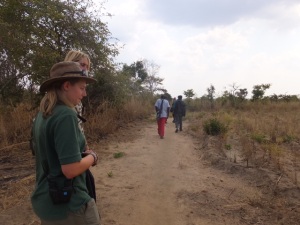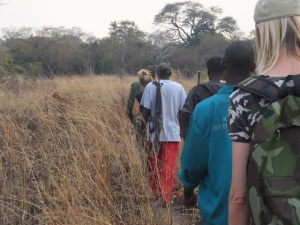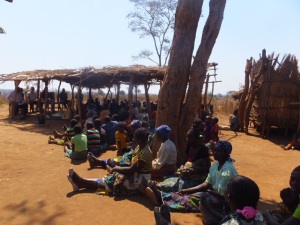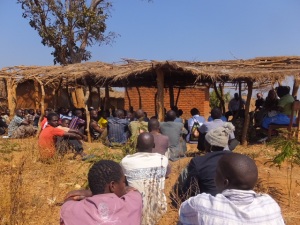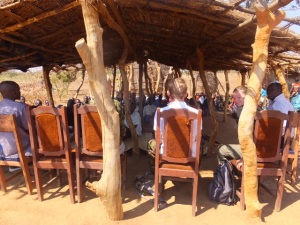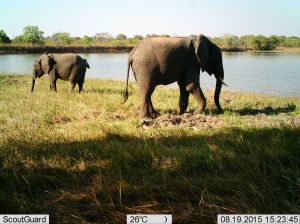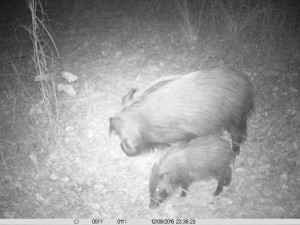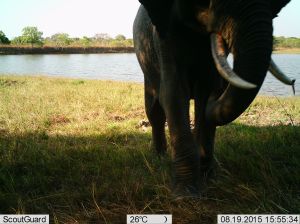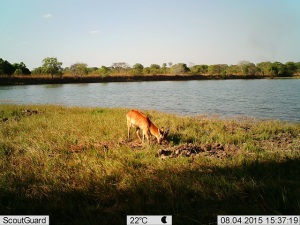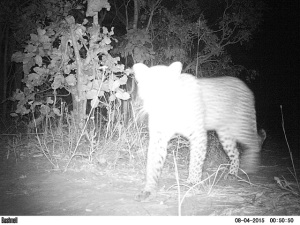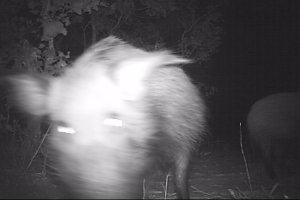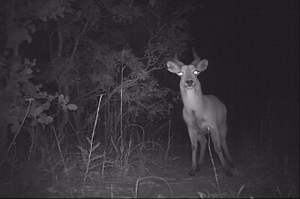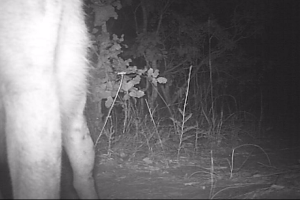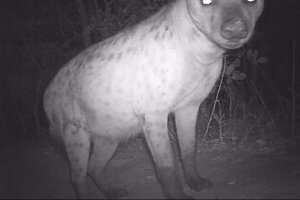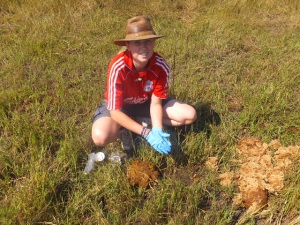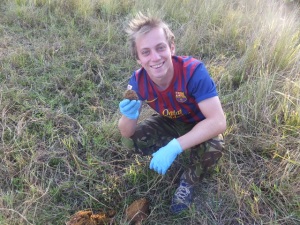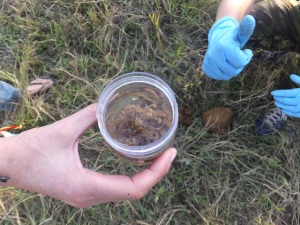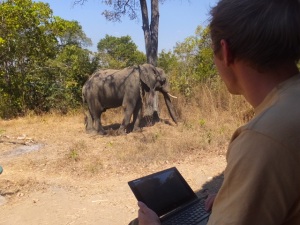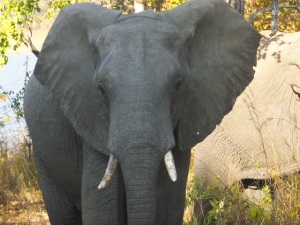For the last four weeks we have been living in Kasungu National Park in Malawi, doing volunteer work for the Kasungu elephants Foundation (www.kasunguelephants.org), run by Remke Lasance. We have been living in the Anti-poaching unit house next to the dam at Lifupa Lodge in the middle of the park, 56km from the town of Kasungu.
The location is gorgeous, and the lodge here has incredible potential but a remarkable lack of guests due to poor marketing and management. We have no fences around our house, we are literally living in the wild. We regularly have elephants on our doorstep, as well as occasionally hippos and leopards in our garden. So we have to be very careful outside, especially at night. The dam often attracts animals, the hippos are always somewhere by the water, elephants regularly come to drink and there are always fish eagles, kingfishers and yellow-billed kites hanging around. And we often have visits from Remke’s cat, Fulu, too.
There is one big problem with this park – it has been savaged by poaching over the last few decades. As recently as 1992 there were over 800 elephants, and now there are only around 50 remaining. So few, in fact, that we already know most of them by name. And not just elephants are poached, buffalo and antelope are also poached for meat. It is incredibly hard to protect such a huge area of land with very limited resources, but that’s what Remke and Matt (from the APU) are aiming to do. The protection put in place by the park management itself is simply insufficient for what is required, much of the park border is unfenced and many of the staff are alcoholics, unmotivated and incapable of doing a good job of protecting the animals.
Matt generally takes on ex-military volunteers for the APU who help him with patrols of the park and arrest any poachers they find. They have already seen a decrease in the rate of animals bing poached as a result. Remke is focussed more on monitoring the elephants and their movements to be able to develop better ways of protecting them. Both of them have an incredible passion for what they’re doing here and have some really exciting projects coming up.
Generally, living in a remote area of Malawi is a very strange experience. It is a very poor country and there is a great deal of corruption and, as I’ve mentioned, alcoholism. It is very rare to see a person with white skin in these rural villages and we have even come across some children who had never seen a white person before. One actually cried when he saw us. But as a white person, I am seen as a symbol of money. People are very friendly, but often they are trying to befriend us before asking us for money or our possessions. When we drive through local villages we are usually met by children shouting “Mazungu!” (“White person!”) and waving happily, though some of them simply run towards the car and shout “Give money!!”. Maybe one time we will stop so I can tell them how much student debt I have (in local currency it’s tens of millions of Kwacha…). I am actually now getting used to attracting large crowds when we stop to buy vegetables and it’s not unusual to have people take pictures too.
Black Rock
One of the highlights of Kasungu National Park is black rock, a large climbable rock in the middle of the park which has incredible views which stretch as far as the border with Zambia. We watched the sunset there one night and then saw a leopard run across the road on our way home! 🙂
The Elephants
We have seen the remaining population of elephants a lot of times in the last four weeks. They love to come and drink at the dam and seem to feel safe around the lodge and our house. We are learning their names and their different attitudes – Panja is adorable, Fupa is usually very chilled and Lifuzu always seems very keen to come as close to the house as possible to say hello to us. We all have whistles to use when the elephants are nearby to let them know we are around. This way we can’t surprise them and they can decide whether they’re happy to stay around or leave.
One time we forgot to whistle near Fupa, he saw Remke making a sudden movement and gave a mock charge which was TERRIFYING. But he soon decided we weren’t worth the hassle and wandered off and ripped a couple of trees down to show off his strength. Generally the elephants have poor eyesight so you can get very close to them without them seeing you, but you have to be aware of the wind direction because obviously they can smell and hear you if they are downwind.
One morning the elephants came to visit us at Remke’s house and we saw a huge number of the males having their breakfast of leaves and oranges. Lifuzu came over to say hello and ended up literally at the doorstep. He could have easily touched me with his trunk. It was incredible to be so close to an elephant in the wild, and very nice that he didn’t try to threaten us in any way! 🙂
Here are a big bunch of our elephant pics 🙂 –
Our Volunteer Projects
Beehive Fence Project
Our main long-term project whilst we have been here has been to investigate the possibility of constructing a beehive fence on the eastern border of the park by a small village called Mndaka. We have visited the proposed fence site, visited local beekeepers and held meeting with the Department for National Parks and Wildlife, COOPI and the local VNRC. We are writing a large report on whether we think the project should go ahead (so far the signs are very positive!) and we have also been working on proposals to get the project funded.
The visit to the local VNRC was a very interesting experience, around 70 local people were at the meeting to hear our proposal, and the big area chief even paid the meeting an unexpected visit, which was greeted by a lot of bowing and rhythmic clapping from the locals. He then asked us for diesel money. Cheeky. But another example of how most people just expect us to have money to give them.
Camera traps
Another little project we have worked on is setting up camera traps near our house to catch footage of which animals which are passing by, particularly at night when we are asleep! We have had some really interesting animals, including leopard, warthog, hyena, civet, genet, hippo, puku and elephant (of course).
One morning I went to check our camera trap and found it had been smashed, what could have done it?

There were lots of potential culprits, but luckily we had video evidence! We had videos of warthogs, a civet cat and a puku on the camera trap that night. But finally it all became clear when we found footage of a hyena chewing his way through the top of the camera for 15 minutes. Thanks hyena!
Dung Collecting
Remke is also involved in a study to take elephant DNA samples, this means collecting fresh dung! When she went away for a couple of days it was left to me and Ruby to try and collect some. First we saw a tuskless female which we named Kamanda pooing on the opposite bank, so we called for a scout to escort us to the scene of the crime and collected a sample. Just a few days later one of the males left some dung for us by the lake right near our house so we scooped that up too! It is important to learn about the genetic diversity of the remaining elephant population because otherwise it will be difficult to help this population to recover without inbreeding.
ID Booklet
We also worked to complete another one of Remke’s projects, a Kasungu Elephants ID booklet. This helps her to identify elephants which are seen and follow the movements of individuals and families. We also made a Quick ID Booklet that we can carry around when we are on the lookout for elephants, which has proved to be very useful! We identify the elephants using unique features such as notches/holes in their ears and tusk characteristics, Fupa also has an obvious kink in his tail.
It won’t be long until our time in Kasungu National Park is over, from here we will be travelling to Lake Malawi to take a week long holiday before flying home. See you soon!


